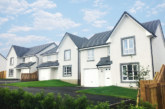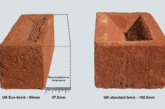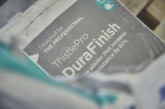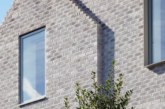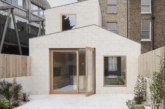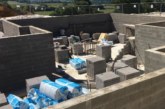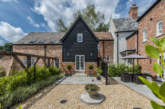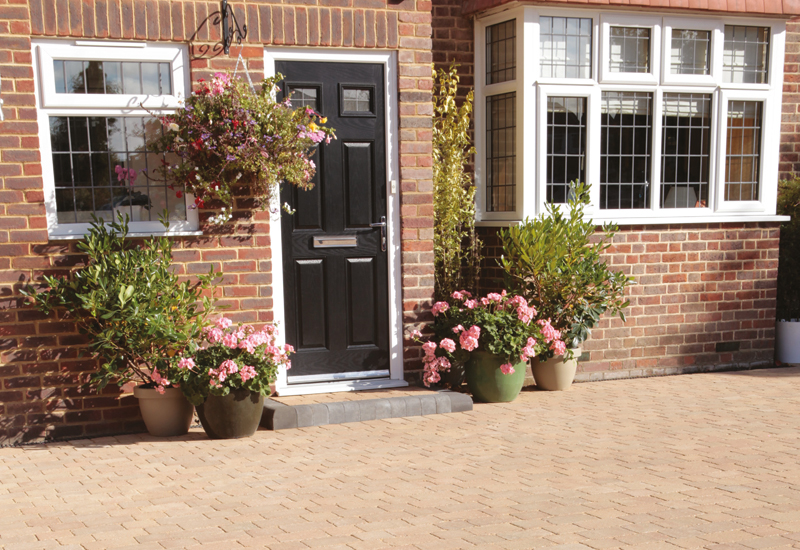
Katie Glover, Marketing Manager for Bradstone outlines some of the key areas to be aware of when consider paving and walling options.
When choosing patio paving for a newbuild, housebuilders will certainly be considering several factors including price, colour, durability and finish.
Concrete is becoming more fashionable as it is produced in a wider variety of styles and finishes for any outdoor space. However, there is still a trend for natural stone with its inherent natural veining and colour options. In both cases, with homeowners expecting their paving to look stylish but last several years, there seems to be a misconception that thickness and durability are exclusively and inextricably linked.
New products on the market such as Bradstone’s Mode porcelain paving range consists of much thinner pavers at 20mm that boast an incredible inherent strength and exceptional durability, having been fired at up to 1,400°C.
This, combined with the fine textured and anti-slip finish makes Mode paving a viable and contemporary premium alternative to more traditional materials. Mode also addresses the increasing trend of ‘taking the inside out’ when combined with matching indoor floor surfaces.
Low maintenance
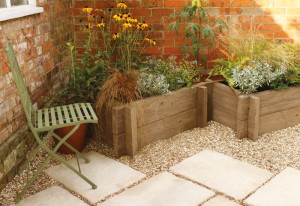
Alongside durability, there is also a strong desire for low maintenance pavers that are easy to clean and will retain their original colour and finish. Porcelain paving is resistant to staining and unaffected by weather conditions and colour-fading. So, not only is Mode virtually maintenance free, it retains its good looks throughout the years to come, looking as fabulous as the first day it was installed.
Newbuild gardens are getting smaller, particularly in urban areas, so it is important to find paving solutions that give the illusion of more space and work well in shady areas. Designers often use larger slabs, such as Bradstone’s Grand Natural Sandstone ultra large paving, to create the illusion of space, or the company’s sleek and contemporary long aspect pavers, StoneMaster, which is also a solution for effectively making a garden look and feel larger.
Blended styles
Both traditional and contemporary designs remain popular to the extent that some designers will often blend the two styles. For contemporary, there is an appetite for sleek lines, uniform sizes and smooth surfaces with sharp edges and modern touches such as LED light strips in the paving. With traditional paving, there is a preference towards textured surfaces with a riven look.
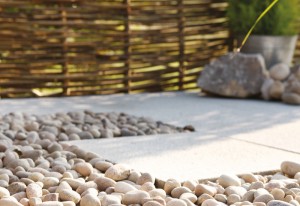
Dark, natural and muted colours are popular – particularly greys and whites. Colour choice is driven by the look, style and age of the house itself, the interior flooring of the house and the surrounding landscape. The grey colourings bring a contemporary feel to outdoor spaces, creating an effective backdrop for bold planting and modern garden furniture.
Square and medium-sized pavers are generally preferred by homeowners but there is evidence of this trend beginning to change due to a current preference from designers for rectangular shapes and a range of paver sizes.
Front of house
Beyond the garden, care and attention must be invested in the ‘front of house’. In all walks of life, first impressions are important and it’s no different when it comes to property. The driveway is one of the most important parts of a house in terms of design. Get it wrong and the whole image of the front of a property becomes unbalanced.
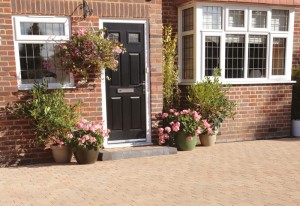
It’s important to opt for a driveway solution that is striking while complementing the existing architecture of the property. Block paving represents an extremely practical and durable solution that can also offer a multitude of design possibilities for homeowners to personalise their space.
Don’t forget those additional design elements such as edging, walling and coping. Using edging is the perfect way to define borders and herbaceous beds whilst making a real design statement. An elegant, formal look or a more rustic, timeworn design can be achieved from both natural and reconstituted stone. For a fully coordinated look, many of Bradstone’s paving solutions have a matching edging option.
Walling
Walling and coping add a sense of structure, space and style to the various areas outside. A wall can not only be an attractive addition to any garden, it can also help form zonal areas within a garden, dividing different elements and helping to shape and structure the landscape. The materials can also be used to create eye-catching features such as raised beds, screens, ponds, barbecues and planters.
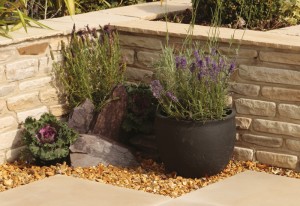
Equally, Bradstone’s Stonewood wood-effect, stone planters are easy to assemble, slotting together in seconds without the need for glue or mortar. Offering the aesthetic appeal and charm of wood, the Stonewood collection is a realistic range of garden features – also including stepping stones and sleepers – that provides all the long lasting reliability and maintenance free convenience of concrete.
And finally, to make your outdoor space go from good to great, the key is in the detail. A garden landscaping feature like decorative stone is a simple yet fantastic way of breaking up paved areas and modernising spaces. Bradstone supply a range of decorative stones –including aggregates, pebbles, cobbles and rockery stones in a variety of colours and sizes – and it really is the finishing touch around borders, between paving stones and on patios, paths, ponds and even driveways. The smallest details really can make the biggest difference.
Katie Glover is Marketing Manager for Bradstone. For more information on Bradstone’s solutions visit www.bradstone.com

